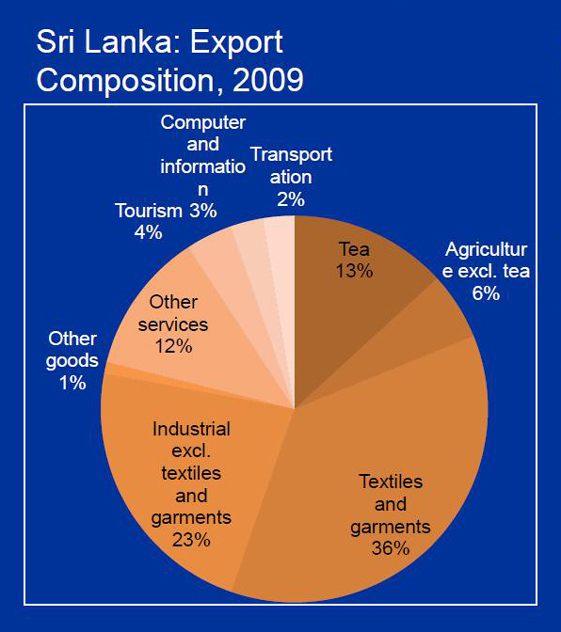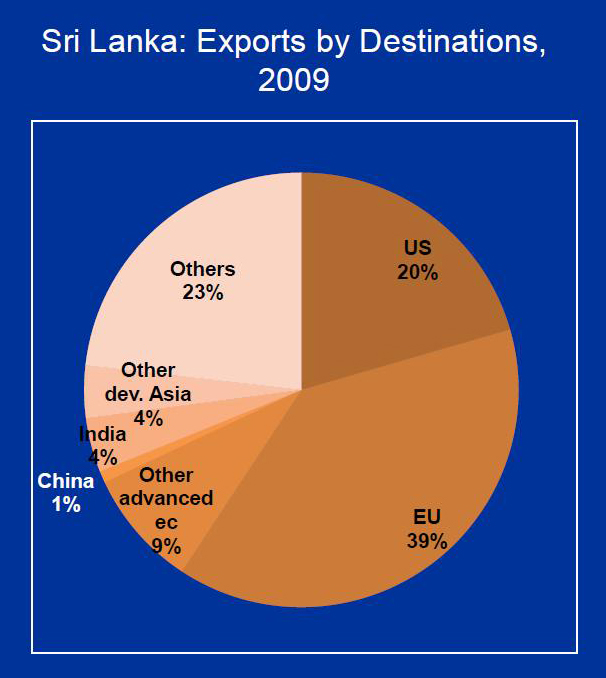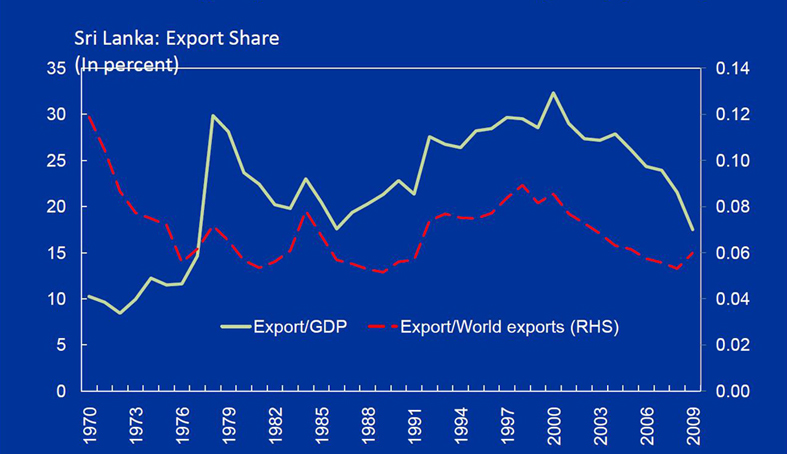"[Sri Lanka’s] export earnings, as a percentage of GDP, have been falling for years. So the first thing for Sri Lanka is to boost its exports to where it was 10 years ago.”
- IMF Asia Pacific Director Anoop Singh. (See The Island’s report here.)
Interestingly, ten years ago Sri Lanka was gripped by high-intensity armed conflict.
And, as the IMF’s chart (click more below) shows, Sri Lanka’s export/GDP ratio today is the same as in 1987 - when the JVP’s second insurgency erupted, and the IPKF intervention began.
While Sri Lanka’s Central Bank says export earnings would grow strongly in 2011, the National Chamber of Exporters recently said it would not be able to deliver half of the Central Bank’s expectations.
The exporters blame growing energy costs (for their production) and the strengthening rupee (making their products expensive in the global market).
See ‘Why Sri Lanka’s exporters are gloomy’
Meanwhile, what exactly does the IMF want Sri Lanka to do? Diversify export destinations (to Asia from US and EU), and export products (from garments and tea to more sophisticated ones).
(i) Diversifying products
 |
The IMF wants Sri Lanka to move away from primary exports (agriculture) and simple manufactures (garments) to more sophisticated ones.
The IMF’s chart is on the right.
But interestingly, this is what President Mahinda Rajapaksa said in his Independence Day address about his Sinhala-nationalist economic doctrine, ‘Mahina Chintana’:
“Mahinda Chintana shows the way to a strong, self-sufficient economy. What we expect from such an economy is not only to produce a successful business community but also paddy farmers with a good earning capacity.
“We also look towards agriculturists who will get the best prices in the world market by supplying vegetables and fruits, as well as tea, rubber and coconut, and also to industrialists who supply goods that are suited to international standards.
“We look forward to a productive economy that will add value to the produce of our own soil.”
(ii) Diversifying markets
 |
Despite some analysts making much of Colombo’s ‘turn to Asia’, Sri Lanka’s exports continue to go mainly (almost 60%) to the United States and European Union.
Exports to China, India and developing Asian counties are a small proportion.
The IMF’s chart is on the right.
Although Sri Lanka has entered into several bi-lateral and multi-lateral trade agreements with the region, many of them are heavily under utilized, The Island quotes economists – for many years.
The IMF believes that
"Greater regional integration will help Sri Lanka capitalise on Asia’s growth while [product] diversification and sophistication would give scope and lift market share."
But that turns on Sri Lanka's government and exporters responding - and their products winning over consumers in Asia.
Meanwhile, this is the IMF's chart on Sri Lanka's exports as a percentage of GDP. In other words, a measure of how much an export-led economy Sri Lanka's is.
 |
A rough guide to Sri Lankan regimes' approaches to liberalisation since 1970:
1970-1977: Prime Minister Srimavo Bandaranaike’s (SLFP) autarkic regime.
1977-1989: President J.R. Jaywardene’s (UNP) ‘pro-market’ regime. Massive economic liberalisation from 1977 (the regime is a poster-child for the IMF's policies), but the results are shortlived.
(1983: armed conflict begins. But export/GDP ratio has already been falling)
1989-1994: UNP governments of Presidents R. Premedasa and D. B. Wijetunga continue economic liberalization.
1994-2001: So does President Chandrika Kumaratunga’s SLFP government
2001-2004: Prime Minister Ranil Wickremesinghe’s UNP government. Liberalization expands with renewed force
2005-date: Liberalisation slowed, and reversed, by President Mahinda Rajapaksa’s governments
We need your support
Sri Lanka is one of the most dangerous places in the world to be a journalist. Tamil journalists are particularly at threat, with at least 41 media workers known to have been killed by the Sri Lankan state or its paramilitaries during and after the armed conflict.
Despite the risks, our team on the ground remain committed to providing detailed and accurate reporting of developments in the Tamil homeland, across the island and around the world, as well as providing expert analysis and insight from the Tamil point of view
We need your support in keeping our journalism going. Support our work today.
For more ways to donate visit https://donate.tamilguardian.com.

